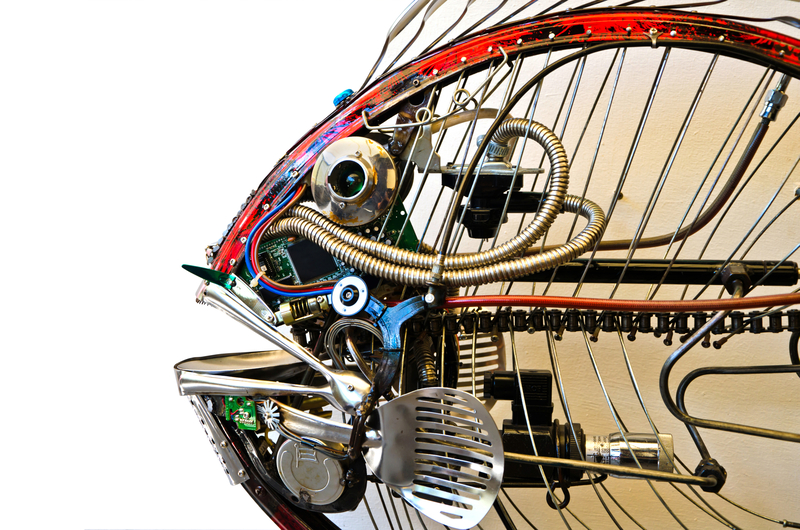Battling the Rising Tide of Microplastic Pollution: A Comprehensive Guide
In recent years, the world has seen an alarming increase in microplastic pollution. These tiny yet pervasive particles are contaminating water bodies, entering our food chain, and posing risks to human health and the environment. Battling the rising tide of microplastic pollution is crucial for the preservation of our planet and the wellbeing of its inhabitants. This article delves deep into the problem of microplastics, their sources, impacts, and the multifaceted solutions necessary to combat this growing issue.

What are Microplastics?
Microplastics are defined as plastic particles measuring less than 5mm in diameter. Though minuscule, their impact is monumental. They originate from a variety of sources and can be categorized into:
- Primary microplastics: Intentionally manufactured small plastics, such as microbeads in personal care products and pellets used in plastic production.
- Secondary microplastics: Resulting from the breakdown of larger plastic items like bottles, bags, and fishing nets through environmental exposure and degradation.
The rise of microplastic contamination is directly linked to global plastic production, which has skyrocketed since the mid-20th century.
Sources of Microplastic Pollution
Everyday Products
Many microplastics enter the environment from everyday items. Common culprits include:
- Synthetic clothing: Washing polyester, nylon, or acrylic clothing sheds microfibers through laundry water.
- Personal care products: Exfoliating beads in face wash, toothpaste, and scrubs often contain microplastics.
- Tire wear: Friction from tires releases minuscule plastic particles onto roads, which are then washed into waterways.
Degradation of Larger Plastics
The weathering, sunlight exposure, and mechanical abrasion of discarded plastic waste eventually create secondary microplastics. This process is particularly pronounced in marine environments, where plastics persist for decades.
Industrial and Agricultural Sources
- Plastic pre-production pellets (nurdles): Loss during transportation and handling often results in these small pellets washing into rivers and oceans.
- Fertilizer additives: Slow-release fertilizers sometimes use coatings made of microplastics.
The Pathways of Microplastics into the Environment
Microplastic pollution is unique in its ability to permeate almost all ecosystems. The main pathways include:
- Urban wastewater: Microfibers and microbeads escape filtration during wastewater treatment and are discharged into rivers and oceans.
- Atmospheric transport: Studies reveal that microplastic particles can travel vast distances through the air, settling in remote regions like the Arctic and mountains.
- Runoff: Rainwater runoff from agricultural fields and urban landscapes carries microplastics into water bodies.
Global Scale of Microplastic Pollution
The scale of microplastic contamination is startling. According to a study by the International Union for Conservation of Nature (IUCN), microplastics account for up to 30% of the total plastic polluting the world's oceans. Recent analyses have found microplastics in:
- Deep-sea sediments
- Drinking water (both tap and bottled)
- Seafood, table salt, and even human stool samples
Hotspots of Pollution
Coastal cities, industrialized river deltas, and popular tourist destinations are particularly vulnerable to microplastic accumulation. The impact on biodiversity and ecosystem health in these areas can be profound and lasting.
Impact of Microplastics on the Environment
Marine Life and Aquatic Ecosystems
The infiltration of microplastic particles into marine and freshwater ecosystems poses a serious threat to aquatic organisms. Fish, shellfish, and even plankton mistake microplastics for food, which can lead to:
- Physical blockages and injuries within digestive tracts
- Reduced feeding and impaired growth
- Bioaccumulation of toxic substances that can be passed up the food web
Terrestrial Environments
While much research has focused on oceans, land-based environments are equally at risk. Agricultural soils can accumulate microplastics from irrigation with contaminated water, atmospheric deposition, or the use of plastic mulch. The long-term effects on soil health and crop productivity are still being uncovered.
Human Health Risks
With microplastic fragments now present in drinking water, food, and the air we breathe, concerns about human health are mounting. Early studies suggest risks such as:
- Inflammation and cellular damage upon ingestion or inhalation
- Potential for microplastics to carry hazardous chemicals or pathogens into the body
Understanding and mitigating these risks is essential as the world grapples with microplastic pollution.
Battling the Rising Tide of Microplastic Pollution: Solutions and Innovations
Individual and Community Actions
- Reducing plastic consumption: Use reusable bags, bottles, and containers. Prefer natural fibers over synthetic clothing.
- Avoiding products with microbeads: Check personal care items for polyethylene and polypropylene beads.
- Proper laundry techniques: Use washing machine filters or laundry bags designed to capture microfibers.
- Community clean-ups: Participate in local events targeting plastic collection from rivers, beaches, and parks.
Government Policy and Regulation
Tackling the challenge at a national and international level requires policy-driven action:
- Bans and restrictions on microbeads in cosmetics and personal care products.
- Incentives for industries to develop biodegradable alternatives and invest in better filtration techniques.
- Stricter regulations on plastic waste use, disposal, and management.
- Encouragement of extended producer responsibility (EPR) to hold manufacturers accountable throughout a product's lifecycle.
Research, Cleaning, and Technological Innovations
- Advanced water treatment: Upgrading wastewater treatment facilities to more effectively capture microplastics before they enter the environment.
- Innovative removal techniques: New technologies such as magnetic extraction, filtration membranes, and nanomaterial-based traps target microplastics in water.
- Plastic alternatives: Scientists are developing biodegradable or compostable materials to reduce dependency on conventional plastics.
- Citizen science and monitoring initiatives: Increasing public awareness and data collection by involving local communities in sampling and cleanup activities.
International Cooperation and Agreements
The global nature of microplastic pollution means that coordinated efforts are essential. Organizations such as the United Nations Environment Programme (UNEP) are working toward:
- Standardizing definitions, sampling methods, and reporting metrics for microplastics.
- Supporting international agreements like the Stockholm Convention, which restricts the use of certain hazardous substances in plastics.
- Facilitating knowledge transfer and collaborative research to track global trends and share best practices.
Role of Education and Advocacy
Public understanding of microplastic pollution is still growing. Continued education, advocacy, and media engagement are vital for:
- Empowering individuals and communities to make informed choices.
- Pressuring industries and policymakers to adopt stricter standards.
- Supporting further research and innovation in the field.
Challenges in Battling Microplastic Pollution
While progress is being made, there are significant challenges to completely stemming the tide of microplastics:
- Ubiquity and persistence: Placing microplastics everywhere from polar ice to remote mountains makes cleanup daunting.
- Detection and measurement: Microplastics' tiny size and variable shapes complicate tracking and removal.
- Lack of international consensus: Disagreements on definitions and methodologies hinder global regulation.
These obstacles highlight the importance of a unified, science-based approach to addressing the crisis.
Future Directions and Hope
Despite the enormity of the challenge, there is cause for optimism. Growing public awareness, scientific innovations, and new regulations are slowly turning the tide against microplastic pollution. Key future directions include:
- Green chemistry: Designing plastics that are easier to recycle, degrade, or are less toxic by nature.
- Circular economy models: Shifting from single-use plastics to systems where materials are kept in use for as long as possible.
- Global data sharing: Collaborative networks monitoring environmental and health impacts of microplastics worldwide.

How You Can Make a Difference
Battling the rising tide of microplastic pollution requires everyone's participation. As a consumer, make responsible choices. Support legislation and corporate practices that minimize plastic waste. Spread the word within your community about the dangers of microplastic proliferation.
- Start at home: Limit use of single-use plastics, invest in sustainable products, and support brands with strong environmental ethics.
- Advocate for change: Petition local and national leaders for stricter regulations against plastic pollution.
- Educate others: Use your voice on social media, in schools, and within community organizations.
Conclusion
The challenge of battling the rising tide of microplastic pollution is complex, but not insurmountable. By understanding the sources, impacts, and potential solutions, we can drive effective action at individual, local, and global scales. Every step taken to reduce plastic use, improve waste management, and innovate new solutions contributes to a healthier, cleaner world for future generations.
The fight against microplastic contamination starts with awareness--and moves forward with action.